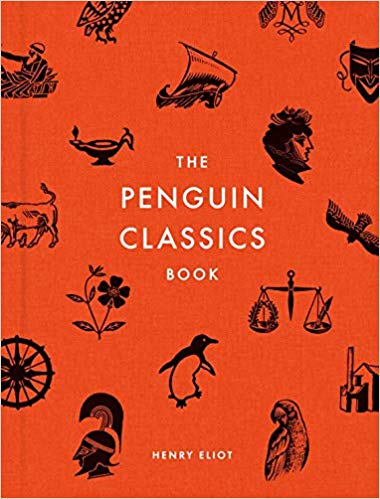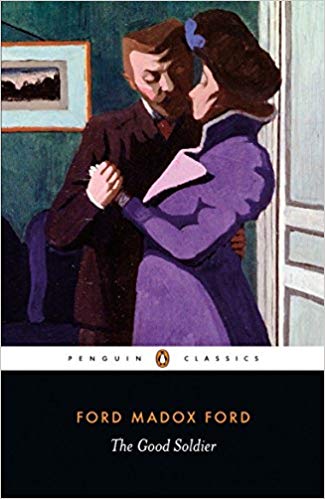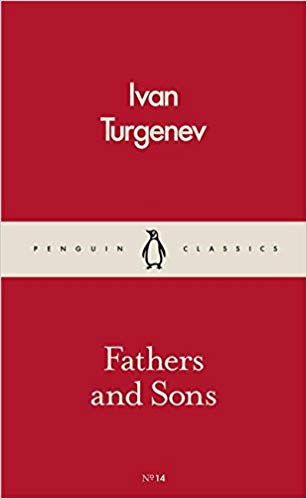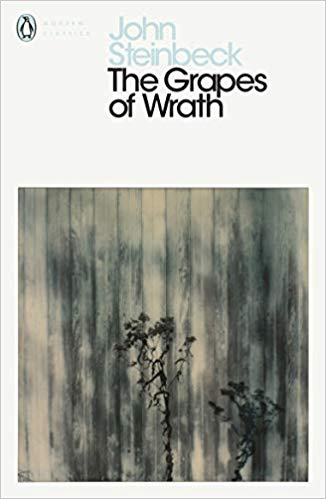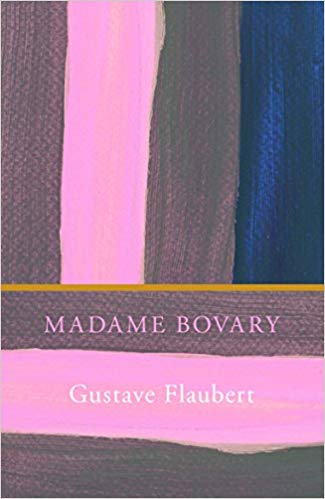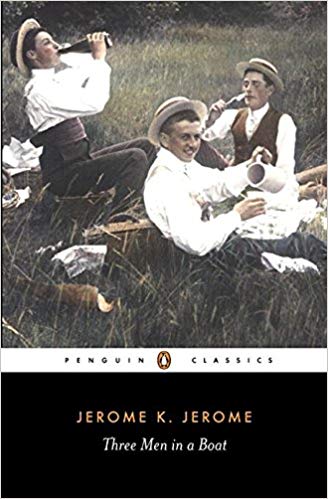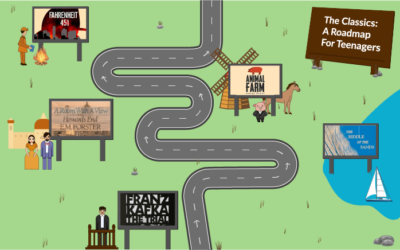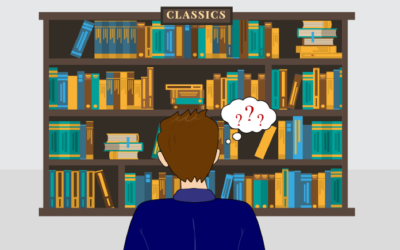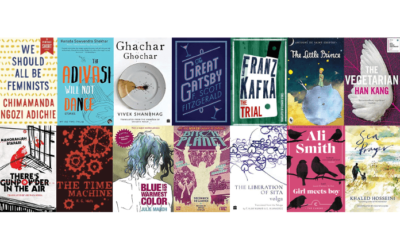Feature | Roadmap
How To Start Reading Classics: A Roadmap

Nirbhay Kanoria
November 21, 2018
Ever since I was a child, I’ve gravitated towards one particular ‘genre’( if one may call it that) of literature, that wildly popular yet nearly impossible to define, that behemoth which has inspired generations of writers and readers, that which is loved by some and found irrelevant by many, but which is universally known as ‘the classics’.
Yet however much they may be discussed and read, there is very little clarity on what a classic really is. There is neither a strict time period nor a particular style of writing which classics follow. There is no ‘governing body’ nor an authority figure who classifies whether a work of literature is a classic or not. At The Curious Reader as well, we are divided on our love for them and are definitely hazy on what defines them.
Looking for answers, we turned to Henry Eliot, creative editor of Penguin Classics and author of The Penguin Classics Book. In our interview with him, he listed three criteria for defining a classic:
- It has to have some form of historical significance- for example, a book which sold very well or one that changed the direction of literature.
- It has to have an enduring reputation- i.e. people are still reading it.
- It has to still speak to the reader today, it has to evoke some kind of reaction- whether positive or negative- and has to be ‘alive’. He ranked this as the most important of the three criteria and said that the minute the book stops connecting with the reader, it stops being a classic.
Many people are ‘late bloomers’ when it comes to reading, and have only developed the habit well into their twenties. As a result, they’ve likely not gone through the canon of classic literature as they possibly would have had they been young readers. Reading classics can teach you a lot about literature itself and can even help you understand modern authors and their work better. It can even be a bit of fun to try to figure which classics author’s influences can be seen in which modern author’s work. However, it can seem a daunting ‘genre’ to get into.
In fact, even those who are regular readers may be unfamiliar with classics and wonder what is the best way to go about reading them. There are so many good classics out there, where does one start? And what to read after one is done with the first? Is there any classic which is a must-read? Is there any which is overrated? The questions never cease.
Once again, we turned to Henry Eliot for help and asked him to suggest a roadmap for adult readers looking to dive into the world of classics. He curated these five books, which he believes are a good starting point for any adult interested in reading the classics. These books are relatively easy to read, reasonably short and won’t leave you confused or intimidated with their heavy nature as War And Peace or Les Miserables might.
Take The Good Soldier by Ford Madox Ford. Neither the book nor the author is particularly popular, but none the less, this book is a good way to begin your classics journey. One of the more basic reasons you should begin with this is because at 256 pages it is not daunting in the least. But more so, the story is intriguing and the book, while really a tragic story of a bereaved and cuckolded soldier, reads more like a delicately layered thriller, with a new element of the story being revealed as each page turns. In the novel the protagonist and narrator, Captain Edward Ashburnham, confesses to having multiple affairs of his own as well as a perverse attraction to his young ward, but when he discovers his wife’s affair with an American friend, it sends him into a downward spiral and forces him to accept the fact that theirs was a loveless marriage, devoid of intimacy of any kind.
One of the reasons this book is brilliant is because it showcases that authors don’t need to use words or phrases that will send you running for a dictionary in order to bring out deep emotions such as despair, frustration, loss and dissatisfaction with one’s life.
The next book to pick would be Fathers And Sons by Ivan Turgenev, considered one of the first famous works of Russian literature. Turgenev tackles the highly complex subject of nihilism in this stunning family drama that deals with, as the title suggests, the relationship between a father and a son. While considered controversial and against Russian morals when released, Fathers And Sons has withstood the test of time and is just as relevant now. As the protagonist, Bazarov, begins to question everything he has been taught, his upbringing, and his value system, he clashes with his father who still believes in the old way of how things should be done. The genius of Turgenev lies in the fact that he manages to explore both sides of the argument, showing the merits of compliance while at the same time emphasising the need to question. Another reason to read Fathers And Sons before other classics is that when you read Tolstoy and Dostoevsky, and you hopefully will, you will see Turgenev’s influence shine through.
When discussing which classics to read, how can The Grapes Of Wrath by John Steinbeck not be featured? This American novel, set during the Great Depression, was a national sensation and tore the nation apart when it was published in 1939. What was initially a series of newspaper articles, developed into one of Steinbeck’s, and probably one of America’s, most important and influential novels. The book features an incredibly strong woman character, which is relatively rare to come across in the classics, who ends up saving her family. While one may argue that a book set during the Great Depression is no longer relevant to our lives but that is not the case- the world saw the dot-com crash in the early 2000s, we saw a financial crisis in 2008, and it seems we’re on the path to yet another economic meltdown. So while the crisis may have changed, and the people affected may not be tenant farmers being forced to move to greener pastures, it is still the common folk who suffer the most and will be able to identify with the Joad family’s suffering. It may seem like an odd choice to include The Grapes Of Wrath in an introduction to the classics roadmap as it is certainly on the heavier side as compared to others, but it is important to read this because of how far-reaching its influence is, and because of how many modern American authors have been influenced by this work.
Gustave Flaubert’s Madame Bovary is another novel which made heads turn and dealt with a lot of criticism when it was first published. This erotic tale of adultery and passion is a classic and is considered a seminal work on literary realism, exposing readers to a slice of real life amidst all the other purely romantic, and improbable novels which were popular in the era. An introduction to the classics cannot be complete without a reader having read this stunning piece of literature even if it is for no other reason than to better understand modern works of realism. You can clearly see Flaubert’s influence shine through in the works of John Updike and Robert Stone, authors of Rabbit, Run and Dog Soldiers respectively, books which themselves have gone on to become modern classics.
A common misconception about the classics is that they are all heavy or tackle deep and dark subjects- poverty, unrequited love, revolution, etc., but that is not always the case. Many classics use humour as a tool to provide social commentary making a difficult subject more palatable for the reader. Three Men In A Boat by Jerome K. Jerome is a perfect example of such a book. The story is quite simple- three men- the author and two of his friends- along with a dog, take a journey up the Thames. It might seem uninspiring and banal but the genius of Jerome’s writing makes it anything but. Read it for the sake of reading a comic masterpiece, knowing that when you read it you’ll feel like a part of everyday life in England, circa the late 1800s- a time when the Empire’s decline had just about begun, and the aristocracy was beginning to be questioned. While Jerome may not have been a prolific author, this short book of his has influenced many other comic greats- from yesteryear’s Wodehouse to present day’s Hornby.
Despair not that you missed out on the classics in your teenage years, for it is never too late to dive into the wonderful world of classics. Follow this roadmap and give them a hearty try- maybe you’ll grow to love them, perhaps you’ll decide that they just don’t work for you. Either way, you’ll certainly be thankful that you’ve been exposed to them and you gave them a fair chance to prove to you why they should be loved.
Special thanks to Henry Eliot for curating this list for us. If you are serious about exploring the world of classics, his book The Penguin Classics Book serves as a great starting point.

As a young boy, Nirbhay had the annoying habit of waking up at 5 a.m. Since television was a big no-no, he had no choice but to read to entertain himself and that is how his love affair with books began. A true-blue Piscean, books paved the path to his fantasy worlds- worlds he’d often rather stay in. Nirbhay is the co-founder and publisher of The Curious Reader.
You can read his articles, here.


